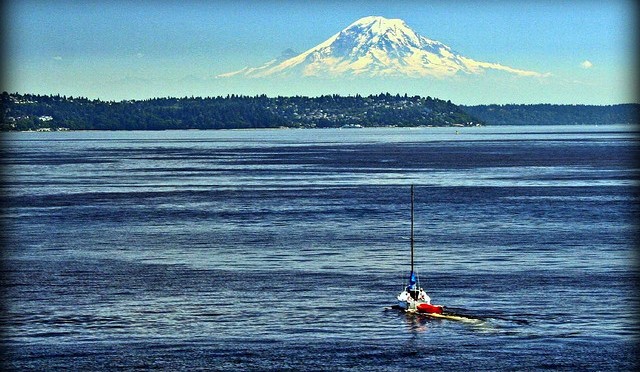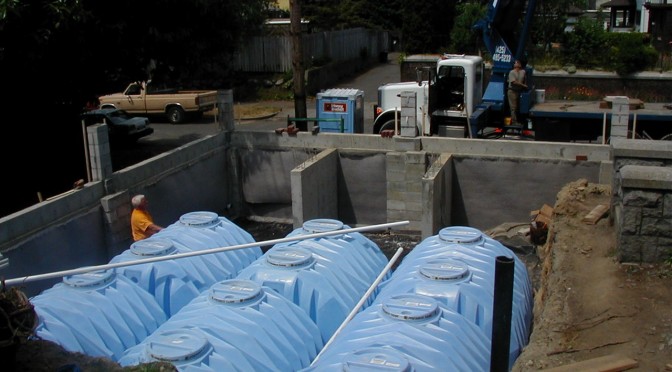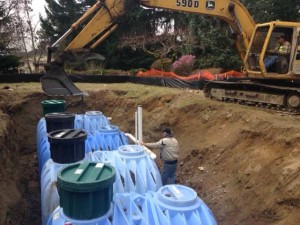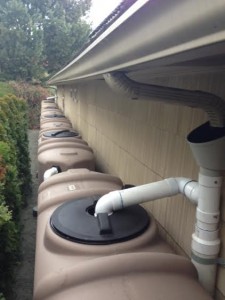
Storm water runoff is a major cause of water pollution in urban areas, which is why we ask the question: How can rainwater harvesting benefit our cities?
When rain falls in undeveloped areas, the water is absorbed and filtered by soil and vegetation. Not so in urban environments. Streets, parking lots and buildings are impervious surfaces and do not allow the natural process of infiltration. In most urban areas, storm water is drained through collection systems and discharged into our waterways. This storm water carries oils, bacteria, heavy metals and other pollutants into the receiving water. The storm water overwhelms the sewer system and intentional releases of sewer into our waterways is conducted to prevent a spill onshore.
Seattle is mandated by the federal government to address its storm water and sewage releases into the Puget Sound. With higher density development, the “Green Stormwater Infrastructure” (GSI) was mandated to address storm water runoff with infiltration techniques such as bio swells, green roofs, infiltration planter boxes, including green parking areas and streets using permeable pavers. While these techniques are helping to reduce run off they do not address the increasing demands on our water resources.
Rainwater that is harvested collects and stores rainfall for future use. When designed and installed properly, it, too, helps reduce runoff while providing a viable source of water for irrigation, toilet and laundry facilities, and when filtrated and disinfected can be an alternative to city water for potable use.
With increased demands on centralized water systems from population growth, aging infrastructure, and increased costs to upgrade and maintain, rainwater harvesting for commercial and residential use is a viable and economical solution.
Mt. Rainier and the Puget Sound photo courtesy of Andrew E. Larsen.



 New stormwater regulations for runoff and green storm water infrastructure are adding to the costs of new residential and commercial construction in Seattle and elsewhere. Infiltration of runoff from roofs, driveways, and all impervious surfaces are mandated by local and Federal agencies. While infiltration does help reduce storm water runoff, the added costs of implementing infiltration or a rain garden can be considerable, with no return on investment for the home owner or building’s owner.
New stormwater regulations for runoff and green storm water infrastructure are adding to the costs of new residential and commercial construction in Seattle and elsewhere. Infiltration of runoff from roofs, driveways, and all impervious surfaces are mandated by local and Federal agencies. While infiltration does help reduce storm water runoff, the added costs of implementing infiltration or a rain garden can be considerable, with no return on investment for the home owner or building’s owner. While the average monthly billing increases are not enough to pay for a rainwater catchment system, the costs of designing and implementing an infiltration system or a rain garden are significant enough that if redirected to designing and building a rainwater collection system along with lower water and sewer bills, a homeowner or building owner will recognize a return on investment.
While the average monthly billing increases are not enough to pay for a rainwater catchment system, the costs of designing and implementing an infiltration system or a rain garden are significant enough that if redirected to designing and building a rainwater collection system along with lower water and sewer bills, a homeowner or building owner will recognize a return on investment.